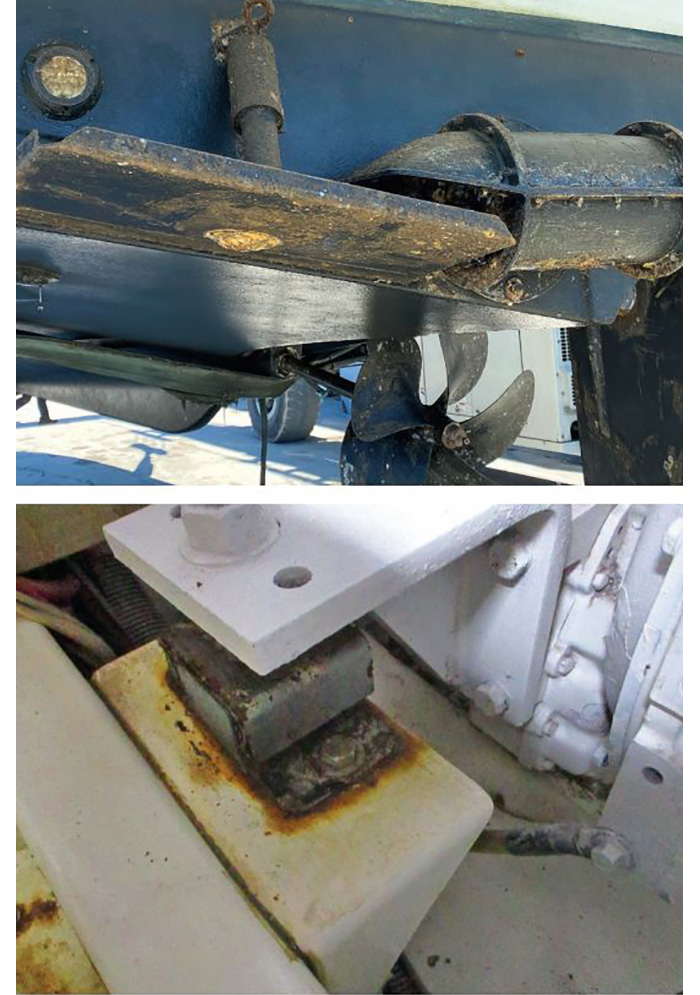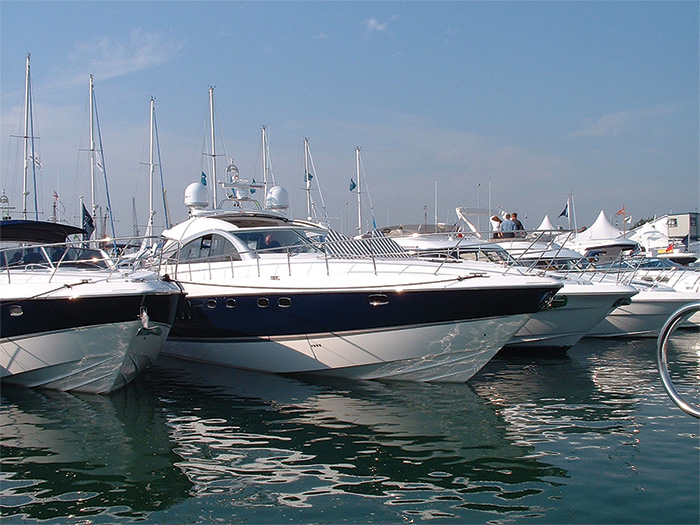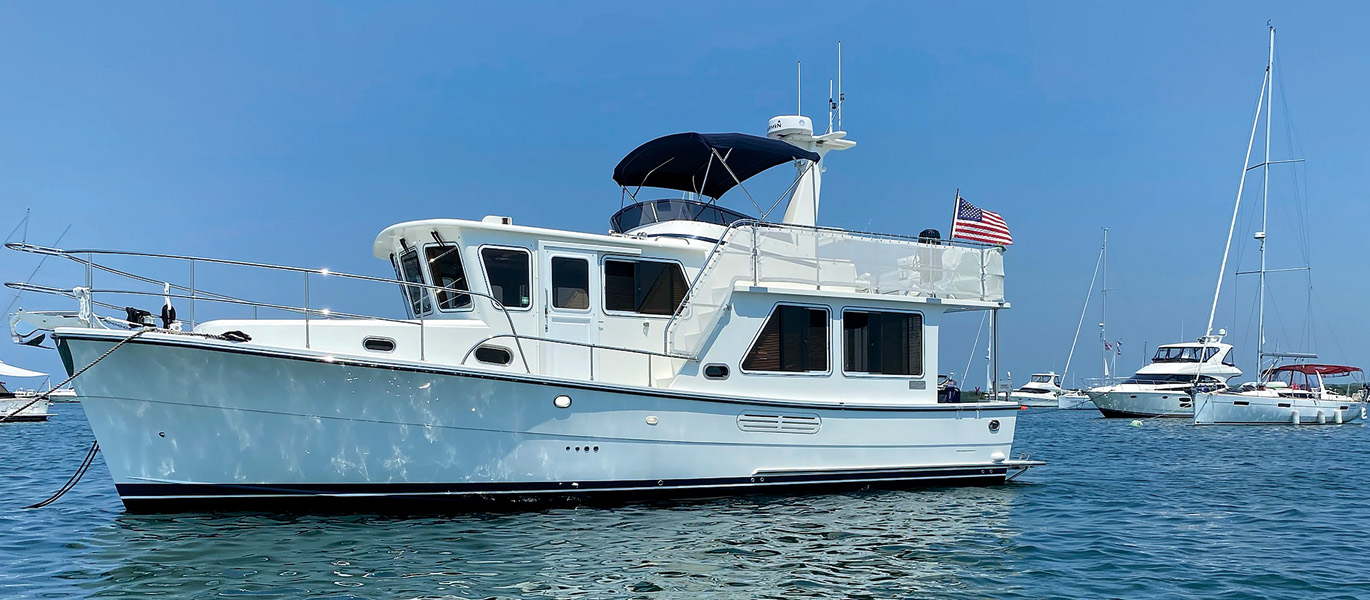Advertisement
My wife and I have been looking to buy a trawler, something about 35 to 40 feet, single diesel engine, and no more than 10 years old. We hit the usual websites and started talking to brokers. At one point, some friends suggested someone who’s a very good “buyers’ broker.” We connected, and he did a great job offering suggestions. During this time, we made offers on three boats, each from solid brands and apparently in great shape. We did three surveys. In all three cases, the deals fell through – each a case of overpromise and under-delivery. Here’s how things went.
Boat No. 1: Unexpected costs
The Helmsman 38 is a beautiful boat, made in China and imported into the U.S. When this particular one was first imported, there was a 25% import duty. On a boat in the half-million-dollar range, that’s $125,000! The boat was originally imported into the U.S., so the import duty was paid at that time. A Canadian eventually purchased it and brought it to Canada, which is where we looked at it. He had to pay import duty to the Canada Revenue Agency when he brought it north.
The survey and sea trial went great and the final day to pull out of the deal was approaching. I kept asking if I’d have to pay U.S. import duty to bring the boat back into the U.S. Everyone in sales assured me that it was paid when it was first imported overseas. However, when I asked for something in writing, they all declined.
I finally connected with a Customs and Border Patrol agent who explained that, as the boat was outside the U.S. for more than three years, yes, import duty was due again. He directed me to the specific section in the tax code. At the agreed-upon sale price, it was going to cost us an additional $90,000-plus in duties. Ouch! The seller was uninterested in negotiating a compromise on the duty, as there were four other potential buyers right behind us. We canceled the deal. A couple months later, the broker mentioned that the seller eventually gave a concession to sell it to an American, perhaps influenced by Canada imposing a 10% “luxury tax” on boats over $250,000. That buyer was looking at two governments taking a large chunk.

Top: The trim tab on the Beneteau was frozen due to underwater growth, which blocked the stern thruster. The stern thruster could not push the stern to starboard as it was blocked on the port side by the frozen trim tab. Bottom: You can clearly see the rusted engine mount on the American Tug. The entire bottom of the engine had painted-over rust that was seeping through. Photo: Paul Loschiavo
Boat No. 2: No workies, no fixies
The second boat was the popular Beneteau Swift 35. This one was a late model, low-hours boat that had been hardly used. When it was pulled from the water for the survey, however, it was plain to see that barnacles had frozen the trim tabs in front of the stern thruster, which explained the failed trim tab operation and poor-performing stern thruster during the sea trial. We asked for a concession to repair the issues. The sellers declined.
Boat No. 3: A flood of issues
The third boat was a great cruising boat, an American Tug 365, owned by a corporate executive and maintained and crewed by a professional captain. It was relatively new and, like the Beneteau, also had very low hours. Prior to the survey, the selling broker advised that “the boat had never been flooded.” It was advertised as being “professionally maintained and in great condition.”
Our surveyor started going over the boat and asked me to climb down into the engine room to have a look. It was clear that the bottom of the engine and turbo had been rusty and painted over because the rust was showing through. We asked the captain about it. He’d just taken over, so he had no firsthand knowledge of any issues, though the previous captain had mentioned a leak in the riser to the turbo. We did some research and came across some reports about the diesel engine in this model developing leaks in the riser. Many mechanics recommend changing it every five years.
It appeared that the previous captain, responsible for maintenance, painted over the rust from a leak rather than repairing the problem. We asked for a major concession, which never made it into writing. This deal also fell through.
Honesty is everything
During the months after we’d moved on from some of these boats, I noticed that a few were still listed for sale. I couldn’t help but calculate how all had been stored or docked in expensive marinas, and all were likely insured. I can only guess that these sellers wished, at some point, that they’d negotiated a concession with potential buyers.
My surveyor, a professional in South Florida, had some excellent advice for sellers. He said that if he were selling a boat, he’d have a pre-sell survey done to identify any problems the boat had. Then the seller could either correct the problems or be up front with prospective buyers. We may not have trusted the survey fully, as it had been done by the sellers, but had the sellers of the boats we looked at done something upfront like that, we likely would have bought one of these otherwise good boats. We kept looking.
5 takeaways for sellers
Every boat sale is unique, and this was my experience. I came away with some thoughts for sellers that might make the process easier for everyone involved.
1. Keep good maintenance records. I was amazed at the poor records I’ve seen for multiple boats. Few sellers we encountered could document even the last oil change. At a minimum, keep the receipts for maintenance in chronological order. If you do the work yourself, write a maintenance log.
2. Be totally honest. If a seller states something in the advertisement that’s later found to be false, the prospective buyer will believe nothing, and the deal is as good as over.
3. Perform all routine maintenance. If your boat is due for new hull paint or regular engine maintenance, do it. Most boats we looked at required a trip to the yard for serious routine maintenance. If you don’t want to pay for it, advertise it as such and price the boat accordingly.
4. Make sure everything is working and operable. If the boat has air conditioning or subscription electronics, make sure they work and can be tested. We could never see a TV work, and most boats required the air conditioning to be serviced. None of these things made us feel confident about the other systems.
5. Price it to sell. The listing broker will provide the numbers for comparable transactions to determine an asking price. But the only thing that counts is what someone is willing to pay for it. Keep in mind what the financial markets are doing. If you’re thinking of selling for six or seven figures, interest rates and recent stock market performance will influence buyers’ attitudes. Also, where a boat loan may have cost 2% or 3% a few years ago, it’s more like 8% now. Price accordingly. — P.L.

Photo: Getty Images
A twist of fate
Because everyone loves a happy ending, the fourth time turned out to be the charm for us. I found a listing for a 2018 Helmsman 38E. The word “listing” is a stretch because the owner of the boat, who was located on the East Coast, connected with the Helmsman people in Seattle, who used stock photos of the model for the ad and didn’t even have an accurate list of what was included. I called to ask if it was available. The broker said “yes” but had few boat details.
Helmsmans are well-made trawlers, so when one comes on the market, it can go under contract within a day or two. So after a couple emails and texts, we submitted an offer. From first seeing the posting to a verbally accepted contract was about 18 minutes. The boat was surveyed a couple weeks later.
When I went on board, the broker showed me the maintenance records. I always thought that my records were good. The seller’s records were outstanding. He had every receipt for everything ever done in a neatly labeled binder. There was a separate binder showing every daily maintenance procedure they ever did. The broker was impressed. I was mentally sold and hadn’t even left the saloon!
The surveyor did the survey and when complete, he said, “I’ve done more than 6,000 surveys. This is only the first or second time that my report will show ‘no findings.’ This boat is spectacular.”
Had we not taken the boat, there were several buyers right behind us. This time, we believed the broker. We paid the asking price.

